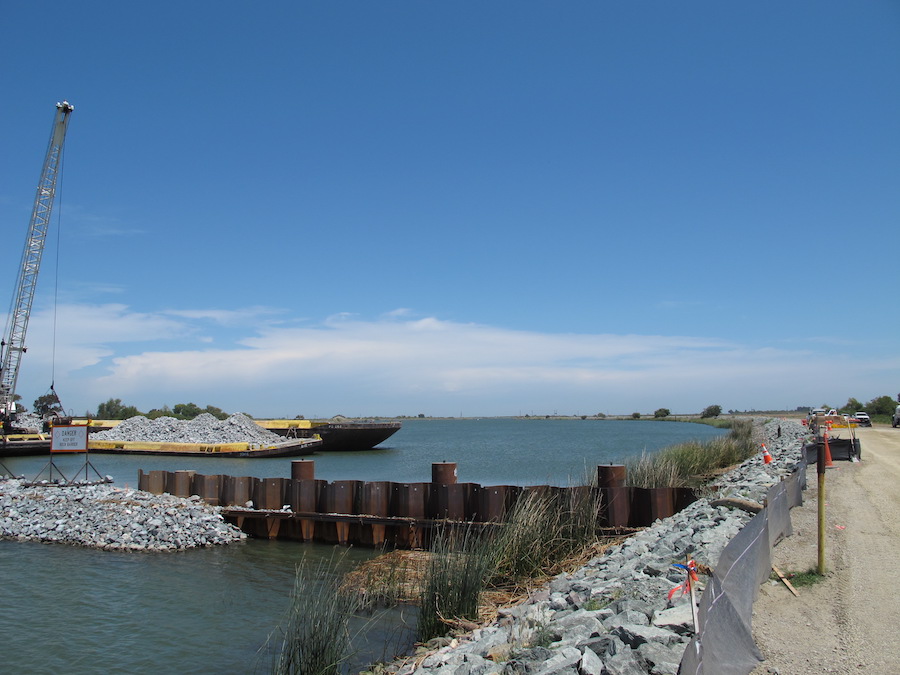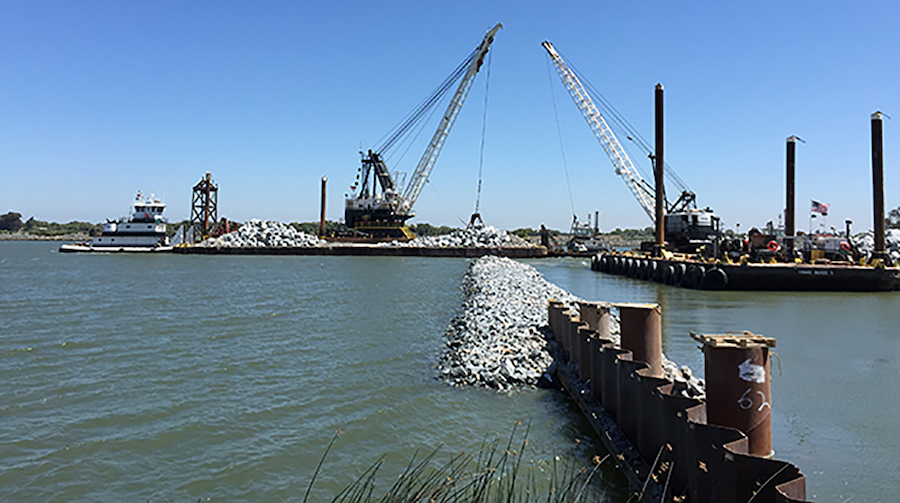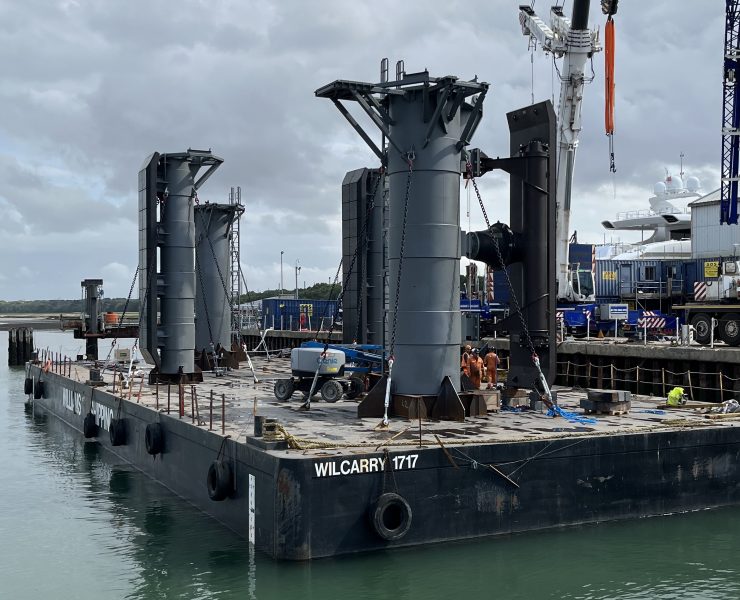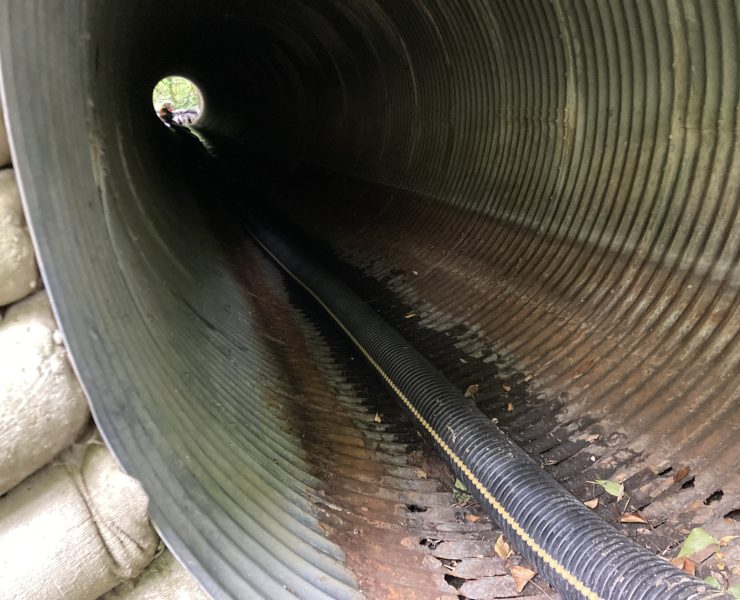AZ Sheet Pile Wall For False Creek Levee


Contra Costa County, CA
History
As of early 2015, the three year old California drought was the worst in recorded history. Several years of a persistent high pressure ridge in the western Pacific Ocean had blocked storms from reaching California in the winter, when the state typically gets most of its moisture.
NOAA, the National Oceanic and Atmospheric Administration reported that a record-breaking rise in temperatures added to a warmer and drier climate. When coupled with the lack of rain, the drought conditions worsened, threatening water quality and fish migration, as well as recreational and agricultural systems.
A report from the University of California, Davis projected that the drought cost the California economy upwards of $2.7 billion for the year 2015. Much of that pain was felt in the state’s huge farming industry, which had been forced to idle a half-million acres and saw valuable crops like almond trees and grape vines die.
The California Department of Water Resources continuously works to protect the water supply in order to preserve fresh drinking water, farming requirements, and environmental needs, while supporting recreational activities as well.
Problem
The False Creek river area, located between Jersey and Bradford Islands in Contra Costa County, was an area of concern for the Department of Water Resources (DWR). Due in part to poor soils at its foundation, the levee area was at risk during seismic events. Additionally, the drought lowered river levels allowed salt water from San Francisco Bay to push upstream and contaminate valuable fresh water.
This delta region is very important and provides fresh water to over 26 million Californians, including residents of the Delta and Contra Costa, Alameda, and Santa Clara counties. Besides providing fresh drinking water to the area, the river also supports the infrastructure, agricultural, and recreational activities of the region.

After the fourth year of drought, the agency gained approval to install a barrier, which preserved the existing limited water supply in upstream reservoirs that otherwise would have been released to help block incoming tides of saltwater from the San Francisco Bay.
Paul Marshall, chief of DWR’s Bay-Delta Office, said the barrier achieved DWR’s goals during this persistent drought. “The barrier worked by preventing salinity to reach the central Delta,” he said. “We were able to save about 90,000 acre-feet in upstream reservoirs for the last quarter of 2015 and for fish releases.”
Solution
Several solutions were reviewed for use, including Rip Rap, Super Sacks, Geo – Tubes, and an AZ/Rock barrier. The final solution to fix these problems was a 12’ wide by 130’ base by 750’ long trapezoidal rock barrier and buttress created by an AZ sheet pile wall. This was anchored by several 36” OD x .750” x 60’ spiralweld pipe piles, provided by Nucor Skyline. Moffat & Nichol provided initial engineering services, and the project was constructed by the Dutra Group (Delta Division). The barrier consisted of about 150,000 tons of embankment rock tying into 36,000 sq. ft. of AZ sheet pile, creating a temporary work closure of the West False River.
The advantages of Nucor Skyline’s AZ sheet pile rock system include local material availability, accelerated construction, durability, and cost effectiveness. The sheet pile provided minimal disruption to the channel bottom, and helped avoid erosion occurring at the project site. Using sheet pile as a solution, there was no loss of structural integrity to the levee. Instead of having to remove the sheet pile once the project was complete, it was easily cut at the mud line, minimizing the impact to the channel bottom and the length of time that equipment had to work on the levee. These qualities made the Nucor Skyline sheet pile an environmentally friendly solution. The system is particularly budget friendly and the preferred solution. System reuse allows the DWR to deploy the AZ/Rock barrier at multiple future levee alignment locations.
One of the many engineering benefits of the AZ/Rock closure system includes being designed to withstand significant lateral forces with less bending stresses and deflections than various other non-steel solutions.
“The barrier worked by preventing salinity to reach the central Delta… We were able to save about 90,000 acre-feet in upstream reservoirs for the last quarter of 2015 and for fish releases.”
– Paul Marshall, Chief of Department of Water Reserve, Bay-Delta Office
Project Partners
Owner
State of California Department of
Water Resources
General Contractor
The Dutra Group – San Rafael, CA
Engineer
GEI Consultants -– Bakersfield, CA
Moffatt & Nichol — Walnut Creek, CA
Product
Sheet Pile: AZ 14-770, ASTM A572 Gr. 50
Pipe Pile: 36” OD x .750” x 60’ spiralweld piles, A252 Gr. 3
Project Time Frame
May to November, 2015

















